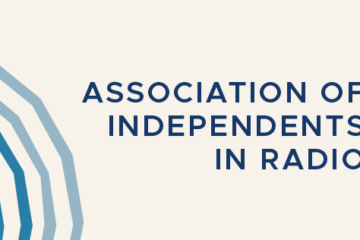Public media: facing challenges, building our future

Mike Janssen, using DALL-E 3
This commentary first appeared on the website of Greater Public Aug. 13 and is republished here with permission.
As we gather in person at the Public Media Development and Marketing Conference in San Diego this week, I’m taking a moment to reflect on what’s happening in public media these days. Some gathered at the conference are expressing a sense of uncertainty and even fear about our future. These feelings are warranted, of course. But my view is that public media has a solid pathway forward. I want to share the reasons for my optimism.
A changing landscape
Here are the facts: The audiences for broadcast radio and television are declining.
Fewer people are watching traditional TV or listening to radio. This means fewer members and less sponsorship revenue. These are revenue streams that are dependent on audience size.
We all know — especially those working in public media membership and sponsorship — that the past few years have been hard.
We’re experiencing a changing media landscape. We can’t actually control how much the American public consumes broadcast media, and I don’t think we should beat ourselves up for something we can’t control. In fact, businesses face changing consumer patterns all of the time. Businesses are frequently tasked with the need to sustain current operations while launching something new. Businesses must find ways to invest resources in building their future. These are what most would call business challenges, not existential challenges.
Public media is facing a business challenge.
The business challenge
We must continue to broadcast with excellence while we adapt and invest in new content on more platforms to meet audiences where they are. Businesses don’t expect every new product to yield a high return on investment. Similarly, public media can’t expect every innovation we try to be a revenue success. But we must try. We must invest in the future. Of course this investment is a challenge when our traditional revenue streams depend on audience size.
The key is to look beyond traditional revenue streams. Membership and sponsorship are dependent on audience size. Mid-level, major and planned giving are not.
The power of our donors
A recent analysis from CDP shows that across public media, our major donors (those giving more than $1,000 a year) make up 1.1%–2.4% of our total donor file. Among many other nonprofits, that average is 5%.
Data from CDP Insights and National Reference File
Working with nonprofit revenue consultants Veritus Group over the last six years, we have analyzed donor lists for dozens and dozens of public media organizations. Our donor base is incredibly loyal and generous. In fact, the size, loyalty and longevity of our donor lists compared to other nonprofits is stunning. We’ve barely scratched the surface of their potential support. The potential to increase the number of donors giving major gifts — as well as gift amounts among current donors — is tremendous.
Due to a generous grant from CPB, 300 staff members from 189 public media organizations participated in the Public Media Major Gift Academy and Certification Course in Mid-Level Fundraising that Greater Public offered in partnership with Veritus Group. The impact of that training exceeded our expectations — by CPB’s own calculations, stations whose staff participated in the Academy raised 70% more in major-gift revenue over a three-year period, on average, than their peers who didn’t. That represents an incremental $73 million for public media.
More than 20 stations have gone on to work closely with Veritus Group consultants and seen revenue grow by 22% in the first year and 27% in the second year. Imagine if we could increase our major gift revenue by 70% over three years. It’s not just possible, it’s probable. With a focused, disciplined approach and appropriate staffing levels, we can see dramatic growth in mid-level, major and planned giving revenue over the coming years. For most public media organizations, it could be multi-millions of incremental revenue.
This new revenue will fuel our ability to innovate and reach new audiences.
Investing in our future
This is the investment that will build our audience on new platforms: newsletters, events, short-form video and more. Let’s experiment, learn and grow. Our focus should be on creating engaging content, growing audiences, building deeper connections with our communities and strengthening our country. When we have the stability to invest in innovations without the burden of getting a return on every experiment we try, the revenue will follow.
As my colleague Aaron Turner of WGVU in Grand Rapids says: “Our superpower as media is that we’re nonprofit, and our superpower as nonprofits is that we’re media.” I’ll add another superpower: our people and the culture of sharing in this industry. We’re fueled by the passion and brilliance of all of public media’s professionals. Our membership and sponsorship professionals are the most deeply connected to public media audiences, donors and mission. Their expertise will help us create, test and develop new forms of sponsorship and new ways for fans to support public media. Mid-level, major and planned giving professionals have the opportunity to develop the giving potential of some of the most ardent and loyal supporters in America.
So I say with full confidence that our future is bright, not just based on hope, but because of strategy. By leveraging our strengths and investing wisely in new platforms, we can ensure that public media continues to thrive.
Let’s embrace our strengths, evolve our model and do this — together.
Joyce MacDonald is president and CEO of Greater Public.






